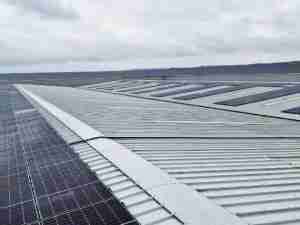'China is still learning how to transport, warehouse and market goods in the modern global economy,' said Craig Meyer, head of Jones Lang LaSalle's Industrial and Logistics group. 'U.S. companies have extensive experience in these disciplines and have tremendous room to apply their talents in China.'
'China is seeking a balance between retaining a leadership position in global manufacturing and catering to the needs of an influential domestic and increasingly urbanized population,' he continued. 'This balancing act offers opportunities for U.S. companies to tap a potent new consumer base within China. And with this, comes an increasing demand for modern logistics space in China.'
The report, 'China a Great Wall of Opportunities,' gives U.S. companies critical insight into China's supply chain and logistics network. U.S. firms pursuing leasing and development in China's maturing market will benefit from the report's strategic insight on supply chain and transportation decisions, warehouse site selection and lease negotiation.
Three major elements provide some long-term opportunities for U.S. companies seeking to do business in China:
1) Competition from neighbors keeps China on its toes
More and more of China's manufacturing operations are shifting inland. Major centers such as Chengdu, Chongqing, and Wuhan (Central China), and Shenyang (in the North) have sprung up as major manufacturing hubs in the past five years. These cities are home to enormous manufacturing campuses to some of the world's largest manufacturers across a diverse range of products and industries. These centers are the heartbeat of the country and are staving off competition from countries such as Vietnam, Thailand and Malaysia, which are lagging China in establishing advanced logistics infrastructure.
2) The rise of the middle classes
New standards of living are creating a shift in consumer taste in China. While U.S. news outlets may focus on the Chinese appetite for luxury items, the greatest boost for the warehousing and distribution market is in the larger market for retail staples such as clothes and food. Additionally, e-commerce is emerging differently in China than in developed nations in North America and Europe. Although the acceleration of sales volume in China is comparable to the U.S. and European countries, methods to pay for and receive merchandise have not yet reached the same level of sophistication. China lacks automated warehouse management or other 'inside the box' material handling systems, putting pressure on retailers to devise their own delivery schemes. 'We expect to see tracking and delivery operations improve in order to meet the projected volume of e-commerce business expected over the next few years,' added Meyer.
3) Infrastructure gradually improving
One of the benefits of China's rapid growth is its investment in domestic infrastructure. New rail and roadway systems are helping to spur commerce and facilitate the efficient movement of goods and materials throughout the country, especially in the quickly developing inland provinces that have lacked transport connections in the past. 'Several Chinese developers have also seen the efficiencies that the U.S. has achieved in its inland rail-served logistics parks, and are now exploring the potential for implementing similar infrastructure in several strategic locations,' said Meyer.
China is now recognizing the profits from years of infrastructure investment. While much of this was initially directed toward the


_-_28de80_-_8f8c6366d00d2f1fde1eee7fbc1f9ce9fbad4504_yes.png)







